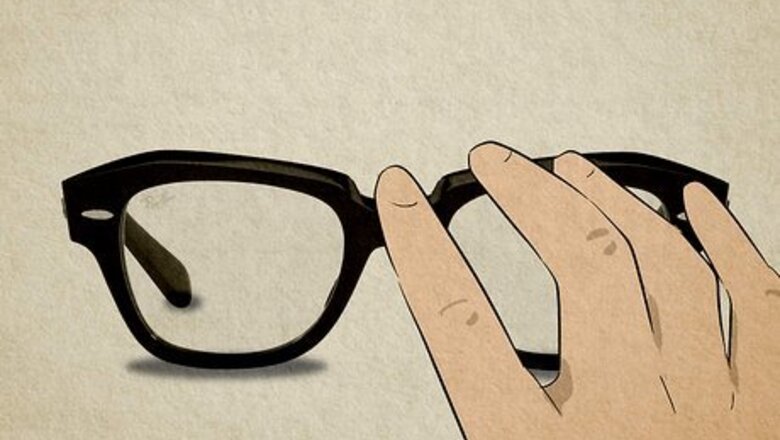
views
Looking for Manufacturing Flaws
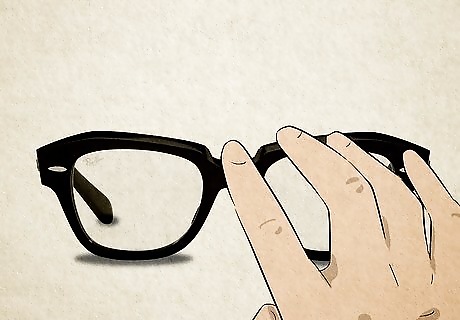
Frames: All genuine Ray-Bans have frames that are cut from single pieces of high-quality acetate. As a result, you shouldn't be able to detect any nicks, rough spots, or seams anywhere on the frame. These are after-products from cheap manufacturing processes and are dead giveaways that a pair of Ray-Bans aren't legit. Seams can be anywhere on a fake pair of Ray-Bans, but they're especially likely to be on the upper edges of the glasses, just above the lenses.
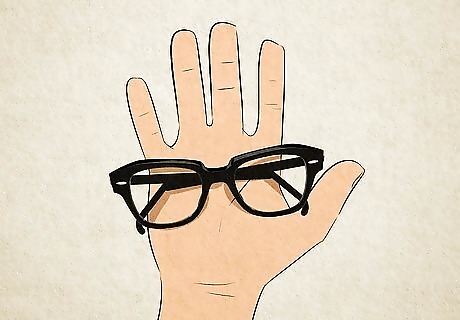
Weight: Turn the glasses over a few times. Gently toss them back and forth in your hands. Real Ray-Bans will have a little bit of heft to them, and they should feel solid and substantial. They shouldn't feel unusually light, thin, or fragile. If your glasses seem like they may not be heavy enough to keep a few pieces of loose paper from blowing away, there's a good chance they're fake. Real Ray-Bans have metal support struts inside the arms that sit on your ears, which give the glasses weight. If you have a model with transparent arms (like the Clubmaster Squares) you should be able to see this metal. If you can’t, they’re fake.
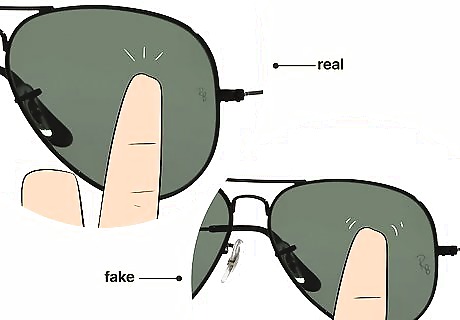
Lenses: Look at your glasses from the front. Give the lenses a few gentle flicks with your fingernail. If they have the look, feel, and "clinking" sound of genuine glass, this is a good sign. If the glasses are a cheaper model, the plastic should be clear and free of blemishes. To be clear, glass lenses are a sign that your glasses are almost certainly real, but plastic lenses may be legit if they appear to be high quality.
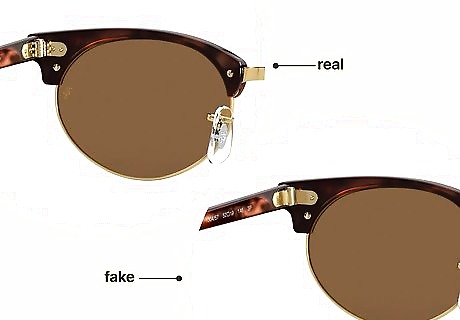
Hinges: Open the glasses and look at them from the back. The hinges in the corners of the glasses should be metal and bolted to the glasses—not glued on or held in place with cheap plastic. Next, open and close the glasses near your ear. If the hinges make noise, your glasses are probably fake. A lot of Ray-Ban models have a distinctive metal hinge that contains 7 interlocking metal teeth. Seeing this is a good sign, but its absence shouldn't be cause for concern, as other types of high-quality metal hinges are sometimes used (for instance, for Ray-Ban's Aviators and Clubmasters).
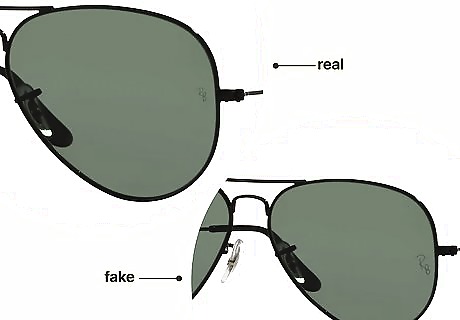
Brand etching: As an authenticity check, Ray-Bans have a small (almost-imperceptible) “RB” etched in the trademark Ray-Ban font on the left lens. This will be small and near the edge of the frame. If this little etching is super opaque, poorly detailed, or appears to be a sticker, your glasses are probably fake. Note that some vintage Ray-Bans have a “BL” etching. This stands for “Bausch & Lomb,” the company that originally owned Ray-Ban. They sold the brand in 1999, so you should only see “BL” on pre-1999 models.
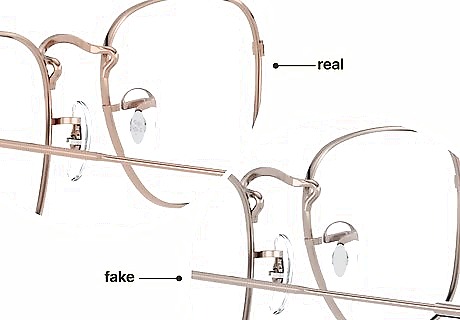
Nose pads: Every part of a genuine pair of Ray-Ban sunglasses is made from high-quality materials—even the little pads that sit on your nose when you wear the glasses. If your glasses are real, these pads should be made of a firm, comfortable rubbery material. If they’re newer glasses, they should also have an “RB” engraving on the metal piece in the middle. Older Ray-Ban models don’t have an engraving on the metal piece inside of the nose pads.
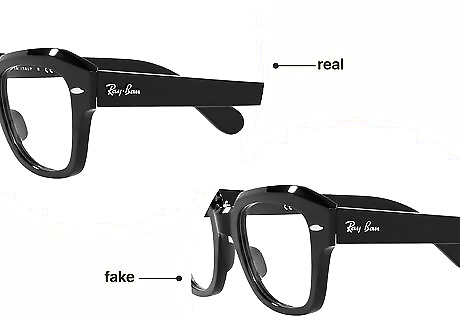
Logo: Take off your glasses and look at them from the side. There should be a cursive "Ray-Ban" logo on the temple portion of the glasses. The print should be cleanly and obviously embedded in the arm of the glasses. If the logo seems cheap, uneven, or it’s a sticker, your glasses are likely a knock off. You won’t see a temple logo on the aviator models or the products that have very thin frames.
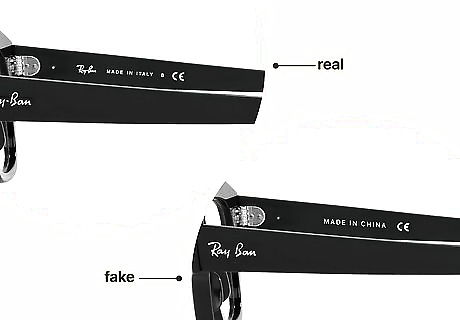
Serial number: Look at the inside of the arms of the glasses for a serial number. Punch this serial number into a search engine and compare the details. One arm will have the serial and model number info, while the other arm will have the Ray-Ban logo, “Made in Italy,” and a stylized "CE" (which signifies that the glasses are certified to be sold in Europe). Depending on where you bought the Ray-Bans, the glasses may say “Made in China” with another stylized acronym. These are not fake glasses automatically; Ray-Ban manufactures glasses in Italy and China.
Analyzing the Packaging
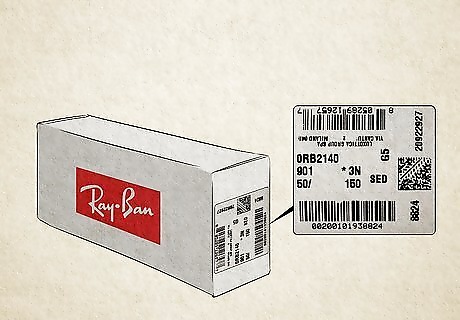
Box serial numbers: If you bought your glasses new, they should have come in a box with a large white shipping label. This label should contain important identifying information for your glasses. If it doesn't, they're probably fake. Official Ray-Ban boxes should be labeled with the following: Model number: Starts with "RB" or "0RB", followed by 4 numbers. Submodel number: Starts with a letter, followed by 4 numbers. Lens type code: 1 letter and 1 number combination (e.g. "2N"). Lens width (in millimeters): 2-digit number.
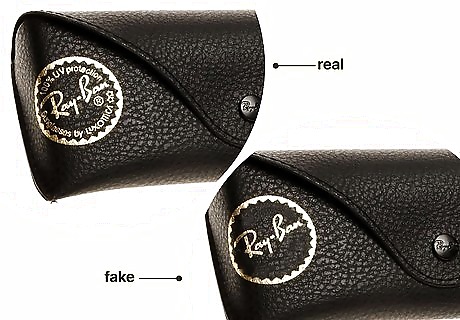
Carrying case: All Ray-Ban glasses come with their own carrying case. If yours didn't (for instance, if your glasses came in a plastic bag), this is cause for concern, unless you bought them after-market (for instance, from a pawnbroker). The glasses’ carrying case should have the following marks of good craftsmanship: A sharp, shiny gold logo on the front left side. The logo should read “100% UV Protection - Ray-Ban - Sunglasses By Luxottica.” If this logo is dull or non-reflective, it’s a major sign the glasses are knock offs. A Ray-Ban logo on the snap. Material that is textured (and feels like) real leather. A hard, protective front portion. Clean stitching.
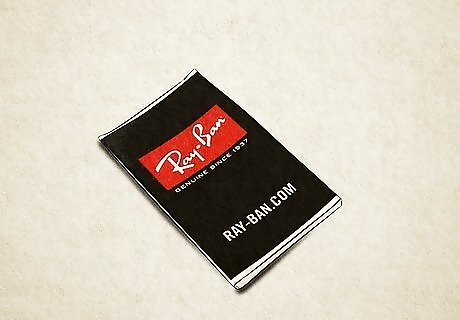
Printing errors in booklet: Real Ray-Bans are usually packaged with a small booklet that discusses the product you've purchased, contains promotional images, and more. This booklet should be flawlessly printed on matte paper. In addition, real Ray-Ban booklets are thoroughly reviewed and edited before their publication. If the booklet contains any sort of error—spelling, grammar, print, etc.—it’s a sign the glasses aren’t legit.
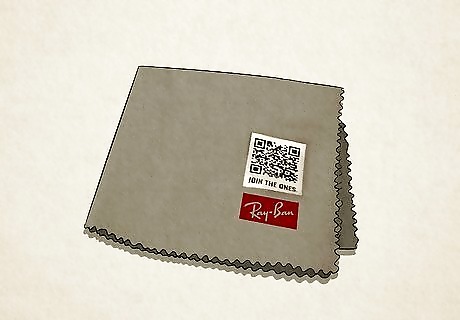
Cleaning cloth: Ray-Bans come with a small felt cloth to clean the glasses. If this cloth is missing from your package, your glasses have either been tampered with or they’re fake. This cloth comes in a variety of colors, but it should always have the Ray-Ba logo on it. Look for the following sorts of defects in the cloth: Stains or signs of previous use. Thin, coarse, or ratty texture. Loose stitching. Cheap-looking material.
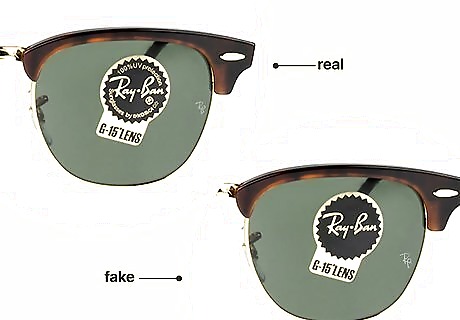
Lens sticker: Ray bans are sold with a distinctive cling-on sticker on the lens as a sign of quality. This sticker should be black and gold (not yellow) and have the Ray-Ban logo prominently featured in the middle of a black starburst shape. The text around the edge should read: “100% UV Protection” and “Sunglasses by Luxottica.” The following defects can be cause for concern: Missing or poorly-spelled text. Off-center logo or starburst shape. Glue under the sticker (it should attach via static, not like a conventional sticker).
Choosing Reputable Sources
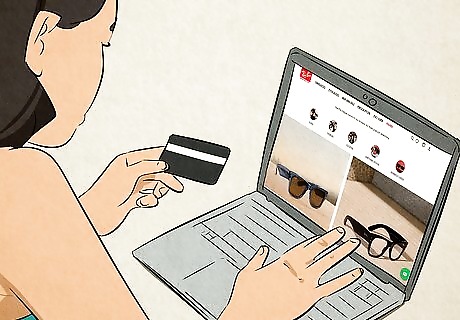
Ray-Ban's official website: If you're ever unsure of a seller's veracity, why take a risk? To make sure you get real Ray-Bans, simply buy from Ray-Ban's official website. The Ray-Ban site allows you to easily browse the entire Ray-Ban catalog, making it obviously preferable to any sort of "shady" seller you might otherwise use.
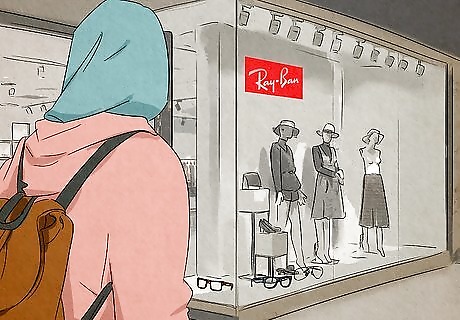
Licensed retailers: When it comes to buying Ray-Bans, not all sellers are created equal. Some, unfortunately, make a practice of selling fakes. To avoid these shady sellers, purchase from stores that are officially-licensed by the Ray-Ban corporation. You can find verified sellers via Ray-Ban’s online search tool.
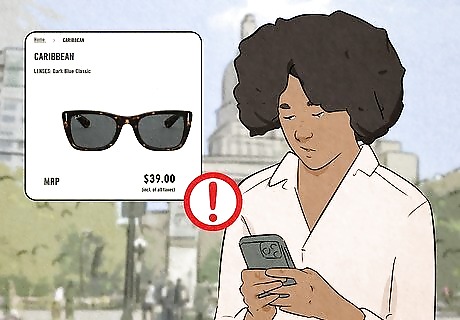
Sellers with high price points: As with many luxury goods, if your Ray-Bans seem like a steal, they’re probably fake. While Ray-Bans vary greatly in price depending on their make and model, they're never dirt cheap. Being hand-made from the finest materials available, Ray-Bans are a premium good sold at a premium price. Be very skeptical of Ray-Bans selling for less than $50. As an example of the sort of costs you can expect for new Ray-Bans, know that, within the Wayfarer group of models, new glasses can retail from about $60 to as high as $300.
















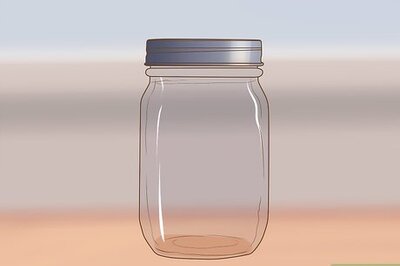


Comments
0 comment